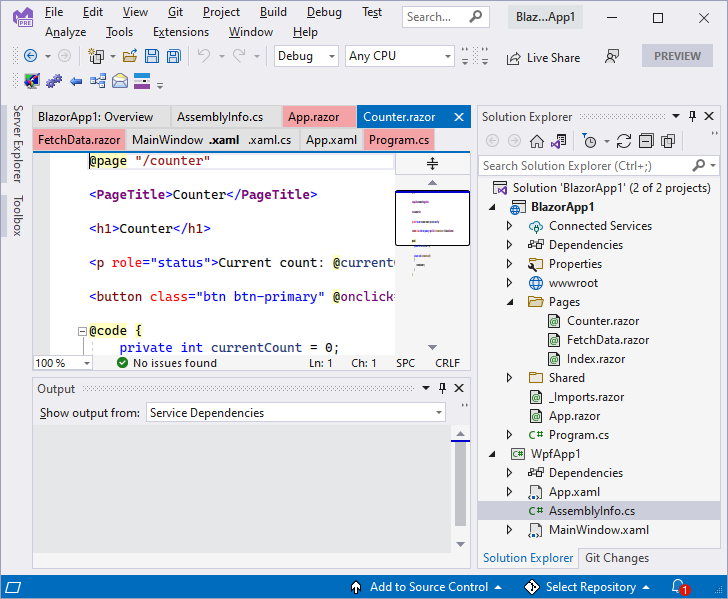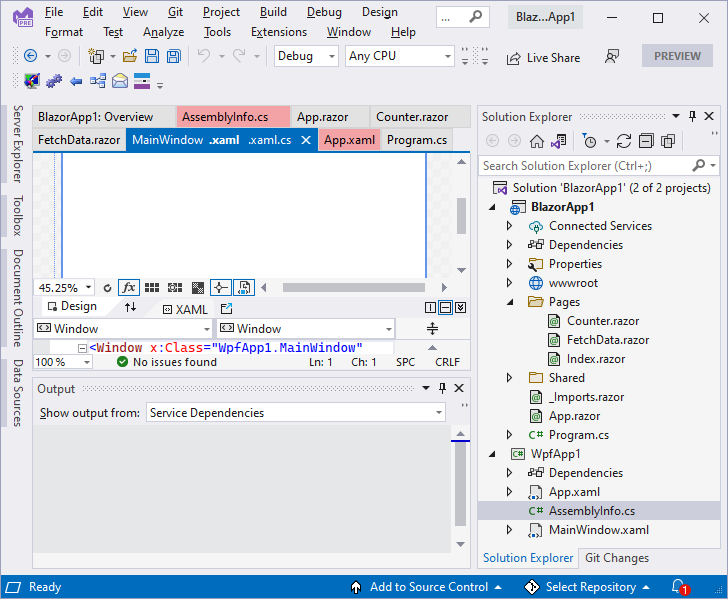I’ve created the new Selector add-in that dynamically highlights tabs belonging to the same project as the selected tab.
For example, when the selected tab is from the BlazorApp1 project:

And when the selected tab is from the WpfApp1 project:

A sample tabs style setting transparent red background color for selected project tabs excluding the selected tab:
<Style TargetType="TabsStudio:Tab" BasedOn="{StaticResource DefaultTabStyle}">
<Style.Triggers>
<MultiDataTrigger>
<MultiDataTrigger.Conditions>
<Condition Binding="{Binding Path=(TabsStudioSelector:Properties.IsSelectedProject), RelativeSource={RelativeSource Self}}" Value="True" />
<Condition Binding="{Binding Path=IsTabSelected, RelativeSource={RelativeSource Self}}" Value="False"/>
</MultiDataTrigger.Conditions>
<Setter Property="Background" Value="#50FF0000" />
</MultiDataTrigger>
</Style.Triggers>
</Style>
Download link: Selector v1.0.0.






















